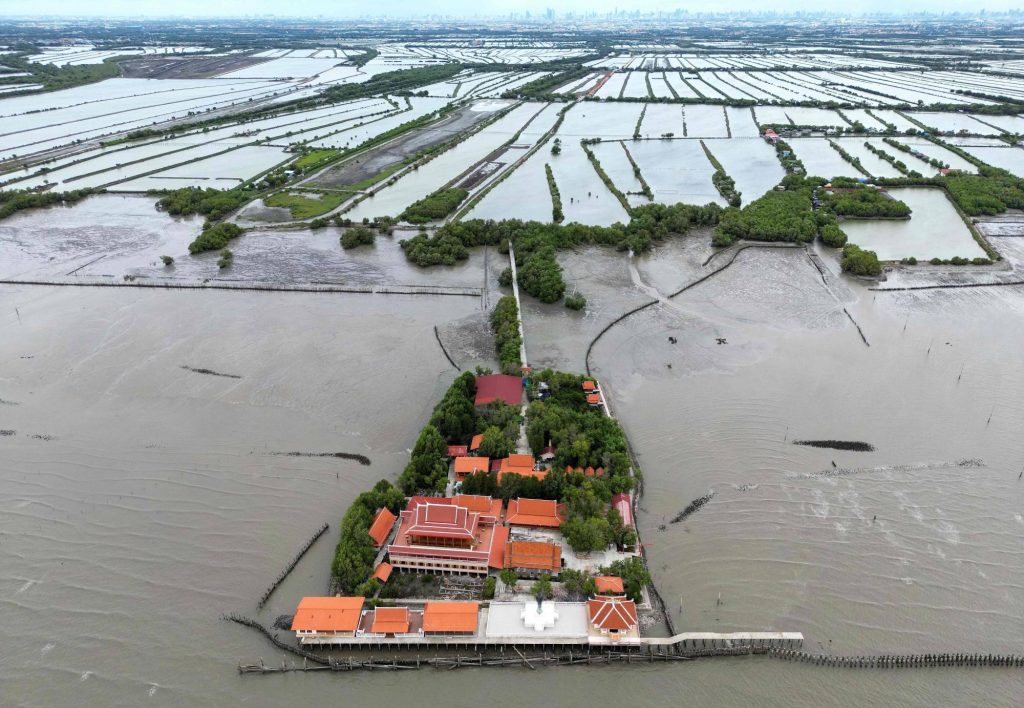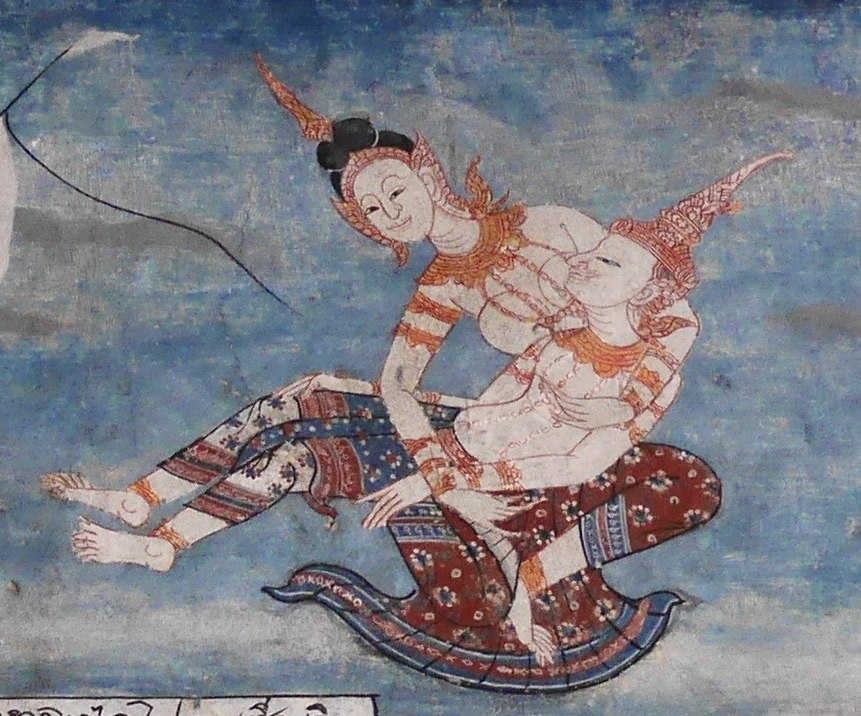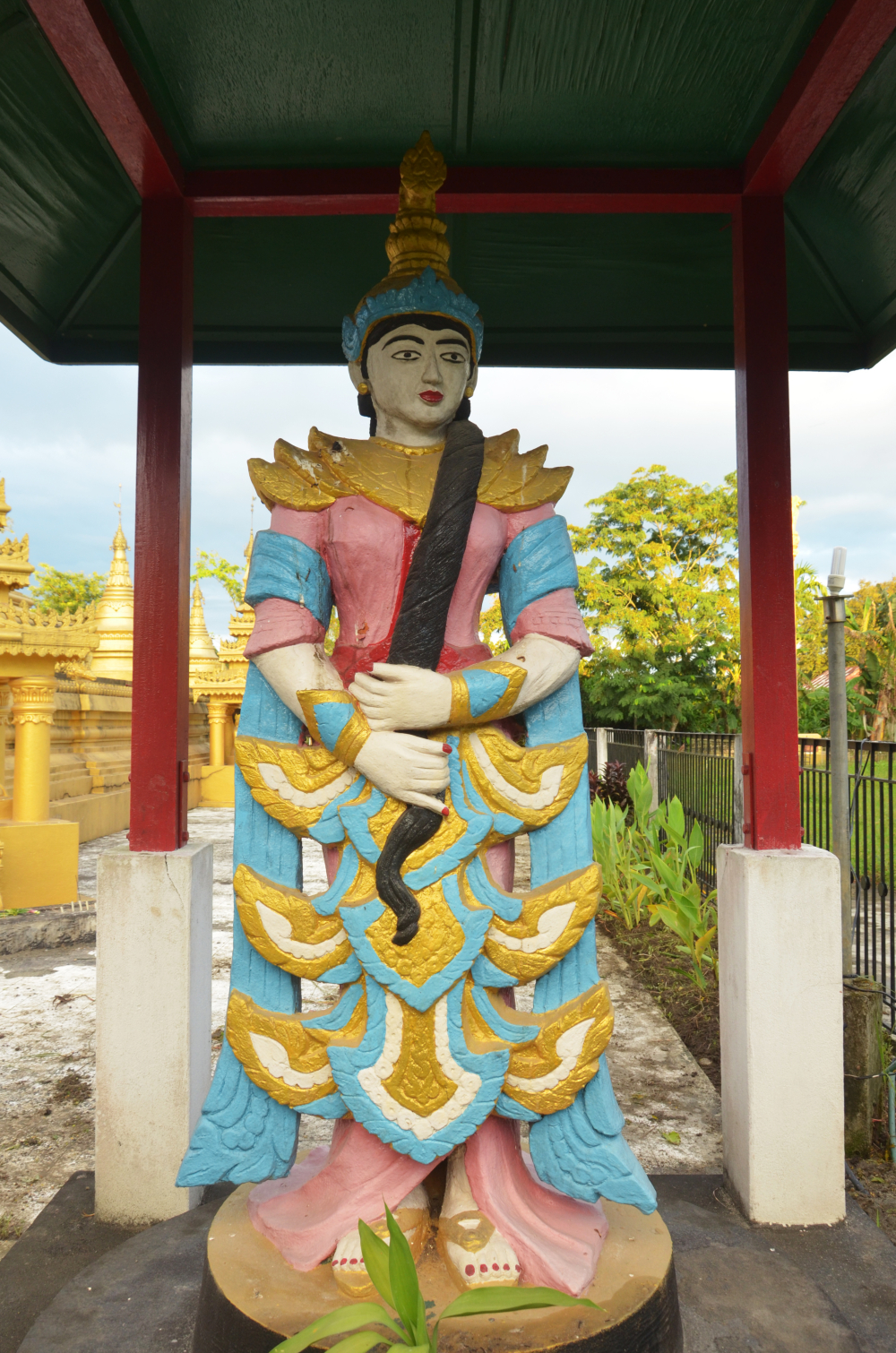
This aerial photograph taken on June 14, 2023 shows the Buddhist temple called Samut Trawat of Ban Khun Samut Chin, a coastal village 10 km south of Bangkok, as seen in the background. At Samut Chin, the ocean has approached by 2 kilometers in the past 60 years. While all other buildings were abandoned and the population settled about a kilometer further inland, the monks lifted the building by two meters and it is now only reachable by way of a small wooden footbridge.
The religious site and the monks caring for it and protecting it against the rising sea level has become emblematic of the situation in the Bangkok Bay. Here’s another foto from 2015 that shows the inside of the temple. You can clearly see how the floor of the room was raised and the water marks on the cement walls.

I have already posted several other images of inundated religious sites across Asia here and here. The most famous one maybe being the Wal Adhuna mosque just outside the sea wall in North-Jakarta. Temples and Mosques have a special value as safe spaces and centers of communities, it is thus no surprise that they become focus points of imagining and expressing our ecological fears.
Here are two articles from 2015 and 2023 about the fate of Ban Khun Samut Chin with more background information.




